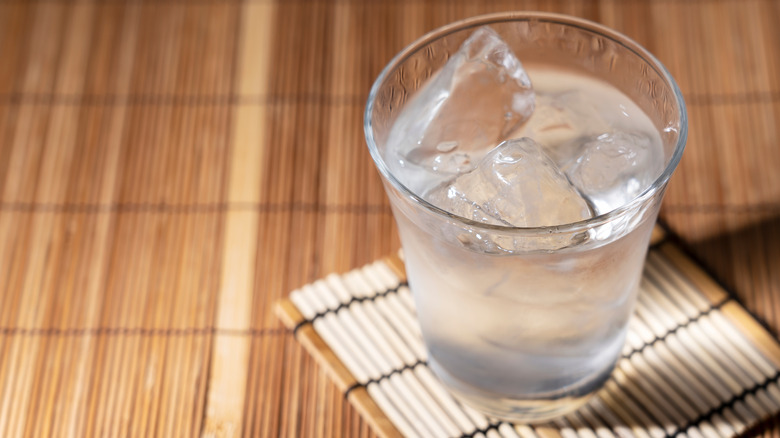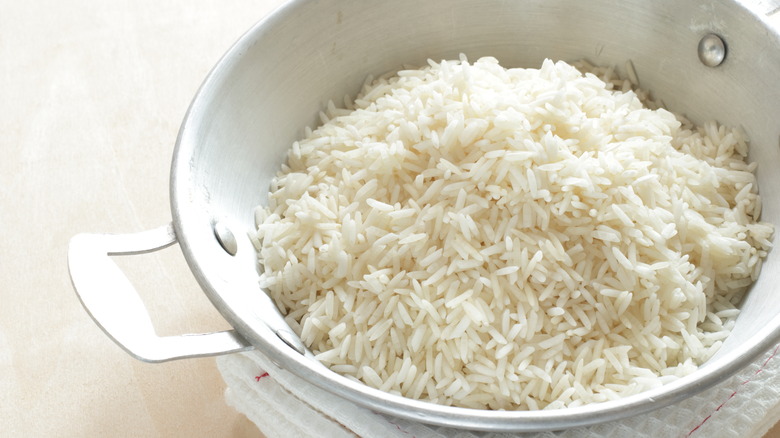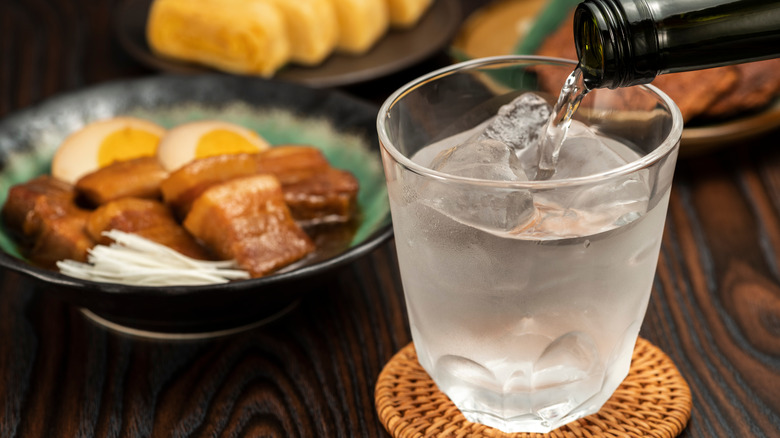What Makes Awamori, Japan's Oldest Distilled Drink, Unique?
Awamori is an ancient alcohol. The beverage is over 600 years old and hails from Okinawa, an island of Japan. Okinawa also happens to be one of the world's blue zones, known for being host to inhabitants that live well above the average age and even upwards of 100. Perhaps there's a connection with imbibing in the venerable beverage?
What makes awamori unique is that it is made with a black mold in the fermentation process that only grows in Okinawa. Japan's other famous libation, sake, is also made with mold, but it is produced with white mold, known as white koji, that is less discerning as to the climate where it forms. While both are made from rice, awamori also differs from sake in how it's derived from the grain — sake is brewed whereas awamori is distilled.
There are only 46 distilleries in Okinawa that produce awamori, but it is increasing in popularity in the United States, Europe, and throughout Asia, so that may change. If you want to hop aboard the trend and be an early adopter, here's what you need to know about the ancient alcohol.
History of awamori
Awamori is Japan's oldest liquor and is exclusively made in Okinawa. It ranges from about 30 to 43 percent alcohol content, but can be up to 60 percent. Trade in Okinawa took off in the 1400s and a product from Thailand they imported was a liquor made from fermenting and distilling coconut sap. The Okinawans are believed to have borrowed this method to begin producing sake and awamori. Originally, it was served to royalty and gifted to the rulers of Japan and China. The popularity of awamori took a big hit during World War II, but the Okinawans built production back up and now it is considered a signature drink.
The origin of the name is up for debate and there is no definitive answer, but one theory of the etymology is that the word is broken out into "awa" which means foam, and "mori" which means to rise up, according to Sake World. This may be due to the foam that forms in the fermentation process. It may also be due to a traditional pour method used to check the amount of alcohol present and the quality of distilled liquor, involving holding an outstretched arm to pour it, Reportedly, the more bubbles that formed and the longer it took for them to dissipate meant the higher quality the lirquor.
How is awamori made?
Awamori is made from a long-grain rice imported from Thailand called Indica. It's soaked in water and a black koji mold is sprinkled atop. Yeast is added and it's fermented and then distilled. The mold makes a citric acid that mitigates the growth of bacteria — ideal for the humid climate. Awamori's flavor has been described as anything from fruity, nutty, and vanilla to mushroom and yogurt, and its scent is sweet.
Amongst the roughly 46 distilleries that make awamori, threeare well-known: habushu, hanazake, and kusu. Habushu is known as snake wine because it includes a very unique ingredient — a coiled venomous habushu snake. But the high alcohol content renders the venom harmless to consume. Hanazake is one of the most expensive types of awamori and has a very high alcohol content. It was traditionally used for religious ceremonies. Kusu, on the other hand, needs to age at least three years before it is enjoyed. Traditionally it was stored in subterranean clay containers for aging, but most of the original vessels were destroyed in the battle of Okinawa.
When, where, and how to drink awamori
Awamori is commonly sipped over ice or served as part of a cocktail, commonly with orange juice, tonic, or a coffee-related drink. It pairs well with food and is typically offered with side cups of both ice and water so you can dilute it to your liking. It may also be served in a pot with a small cup similar in size and shape to a sake cup to be enjoyed neat. Awamori is always meant to be sipped slowly and not taken as a shot, regardless of the size of the cup it is served in. Much like sake, it can be enjoyed either hot or cold. It is either cut with ice and water, or with hot water. Cold awamori is smoother while hot awamori is soft. Because it is distilled and is low on impurities, awamori is known to come with less of a hangover the following day.
Awamori is a staple on restaurant menus in Okinawa as well as available to purchase at supermarkets and stores. While not often found on menus outside of Japan, awamori is available in stores across Europe and the United States.



